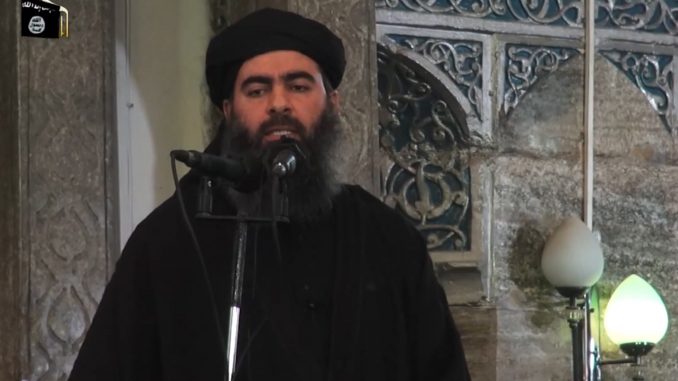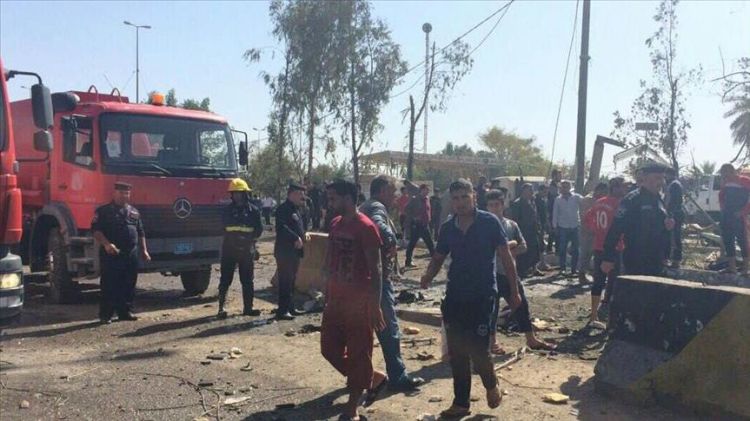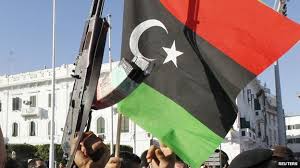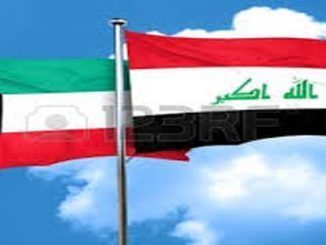
Sources said that Abu Bakr al-Baghdadi, the leader of the Islamic State group, has fled Mosul and left operational commanders behind him as the battles intensified in the western part of the city and commanders say it is going to end soon.
At the height of its power two years ago, Islamic State ruled over millions of people in territory running from northern Syria through towns and villages along the Tigris and Euphrates river valleys to the outskirts of Baghdad in Iraq.
It was the mosque of Mosul where al-Baghdadi declared his Caliphate and named himself as the ruler of all Muslims from Mosul’s Great Mosque after his forces swept through northern Iraq in 2014.
However, no one can know for sure where he is now.
The United States is providing air and ground support to Iraqi and Kurdish forces trying to dislodge the hardline group from Mosul.
Iraqi forces captured the eastern side of Mosul in January after 100 days of fighting and launched their attack on the districts that lie west of the Tigris river on Feb. 19.
Islamic State militants who retreated across the Tigris river to western districts also regularly target civilian areas under government control in the east with mortars and grenades dropped from drones.
Several thousand militants, including many who traveled from Western countries to join up, are believed to be in Mosul among a remaining civilian population estimated at the start of the offensive at 750,000.
They are using mortars, sniper fire, booby traps and suicide car bombs to fight the offensive carried out by a 100,000-strong force made up of Iraqi armed forces, regional Kurdish peshmerga fighters and Iranian-trained Shi’ite paramilitary groups.
Where is he now?
It is impossible to confirm the whereabouts of al-Baghdadi now.
But U.S. and Iraqi intelligence sources say an absence of official communication from the group’s leadership and the loss of territory in Mosul suggest he has abandoned the city, by far the largest population center his group has ever held.
He has proved to be an elusive target, rarely using communication that can be monitored, and moving constantly, often multiple times in one 24-hour cycle, the sources say.
From their efforts to track him, they believe he hides mostly among sympathetic civilians in familiar desert villages, rather than with fighters in their barracks in urban areas where combat has been under way, the sources say.
Baghdadi, an Iraqi whose real name is Ibrahim al-Samarrai, is moving in a remote, mostly-desert stretch populated exclusively by Sunni Arab tribes north of the Euphrates river, according to Hashimi.
The area stretches from the town of Baaj, in northwestern Iraq, to the Syrian border town of Albu Kamal on the Euphrates.
“It’s their historic region, they know the people there and the terrain; food, water and gasoline are easy to get, spies are easier to spot” than in crowded areas, he said.
The U.S. government has had a joint task force to track down Baghdadi which includes special operations forces, the CIA and other U.S. intelligence agencies as well as spy satellites of the National Geospatial Intelligence Agency.
But Baghdadi seems to have learnt the lessons from the 2011 capture and killing of Osama bin Ladin, and relies on multiple couriers and not just one, unlike the al Qaeda founder, say U.S. intelligence sources.
He also switches cars during trips, a lesson learnt from the 2011 drone strike that killed Anwar al-Awlaki, an al Qaeda figure in Yemen.
Baghdadi has not publicly appointed a successor, but Iyad al-Obaidi, also known as Fadel Haifa, a security officer under former dictator Saddam Hussein, is known to be the de facto deputy, according to Iraqi intelligence sources.
More than 40 leading members of the group have been killed in coalition air strikes, but the insurgency is likely to continue even if Mosul is captured and Baghdadi and his aides are killed, according to Iraqi security experts.
“There will be other commanders rising because the structure of the organization remains,” said Fadhil Abu Ragheef, an Iraqi security expert specialized in IS affairs.
ISIS is isolated
The intelligence sources point to a sharp drop in Islamic State postings on social media as evidence that Baghdadi and his circle have become increasingly isolated.
Baghdadi himself has not released a recorded speech since early November, two weeks after the start of the Mosul battle, when he called on his followers to fight the “unbelievers” and “make their blood flow as rivers.”
Since then, sporadic Islamic State statements mention attacks carried out by suicide bombers at various locations in Iraq and Syria, but place no particular emphasis on Mosul, despite the city being the main center of fighting.
Neither Baghdadi nor any of his close aides released any comment on the fall of the eastern part of the city in January.
The group’s presence on Telegram, a social media network that had become its main platform for announcements and speeches, has tapered off. The coalition estimates that Islamic State activity on Twitter has fallen by 45 percent since 2014, with 360,000 of the group’s Twitter accounts suspended so far and new ones usually shut down within two days.
Advance in western Mosul
On Wednesday, the Iraqi military said the army and Shi’ite paramilitary forces had taken full control of the last major road leading west out of Mosul towards the town of Tal Afar, state TV reported.
The 9th Armoured Division and two Shi’ite fighting groups had “isolated the right-bank (western side of Mosul) from Tal Afar”, it said.
The road links Mosul to Tal Afar, another Islamic State stronghold 60 km (40 miles) to the west, and then to the Syrian border.
In addition, CTS forces recaptured the Moalimin and Silo districts inside of Mosul on Thursday, according to the commander of the campaign Lieutenant General Abdul Ameer Rasheed Yarallah.
Inside the city, CTS are fighting alongside the Federal Police and the elite interior ministry Rapid Response force, which earlier this week recaptured the provincial government headquarters and the Mosul museum.
A federal police colonel said on Thursday there were skirmishes close to the museum, where the militants filmed themselves destroying priceless statues and sculptures in 2015.
“The frontline is just beyond it,” said Lieutenant Colonel Hammeed Habib of the Rapid Response forces. “There are snipers stationed in tall hotel buildings on a road beyond that line”.
Recapturing the complex of government buildings would help Iraqi forces attack the militants in the old city, in addition to retrieving a second bridge on Tigris river, which will shield the back of the advancing forces.
The CTS forces had fought their way well into the Mansour neighborhood and were trying to advance street by street, sending heavy fire on IS sniper positions, a Reuters correspondent visiting the special forces’ front lines reported.
Federal Police units arrived at a house that CTS forces were stationed in but had to move out, one-by-one, to a neighboring building as IS rocket fire hit homes nearby.
One CTS operative on the ground said he thought it would take a few hours to retake Mansour, one of Mosul’s biggest neighborhoods which lies southwest of the old city and could serve as a base to advance into the historic center.
U.S. special forces were seen walking between buildings in the same area, some carrying assault rifles with scopes and silencers. Helicopters attacked targets just to the north and thick smoke filled the sky from various explosions.



